9. Havneopphold, mottagelse av last, skade på last
Læremål
Etter å ha gjennomgått dette kapittelet skal studenten ha kompetanse om:
- Mottagelse av last, kontrollere om det er skade på last.
Ha kjennskap til:
- Hjelpemidler til stuing av last og beregninger av hydrostatiske verdier.
- Dokumenter i forbindelser med transport av last.
- Hvordan man handterer skadet last og utsteder protester
- Hva er et lastekrav (Cargo claim)
- IMO standard communication phrases som inngår ved transport av last, utstyr og forskjellige operasjoner innenfor laste handtering.
Et skip er stadig på farten, fra havn til havn, lasting og lossing, mange ganger gjennomføres begge operasjonene samtidig. En ny sjøreise med mange havner, det er mange ting som skal passes på, mange havner å anløpe, mange nye laster som bookes inn, man må hele tiden holde kontroll på at skipet ikke blir overlastet i henhold til lastelinjekonvensjonen og heller ikke har for stort dypgående sånn at skipet ikke kan anløpe en bestemt kai.
Det er mange som skal varsles, slik som: losstasjon om ankomsttid, mottager eller til rederiets agent om ankomsttid terminal, det samme til et opptellingsfirma (Tally cargo) også videre.
Alt må planlegges nøye til minste detalj, et havneopphold består av mange ledd, hvis man feiler med et av leddene så kan det snu opp ned på et hele havneanløpet, som kan medføre at skipet må vente til ankers på reden istedenfor for å laste eller losse ved en terminal. Her skal vi ta for oss hvilke hjelpemidler et skip kan ha og hvilke forholdsregler det bør ta når last kommer om bord..
Autoload SPS Stykkgods stuasje planlegger
Break bulk stowage planning), med tillatelse fra Coastdesign, Norge.
Autoload SPS Break Bulk er generell lasteplanlegging programvare. Denne revolusjonerende programvaren optimerer laststuingen, og overvåker også sjødyktighet. Autoload SPS Stykkgods er et totalt reisebasert program, og gir dermed kontroll over skipets lasting gjennom hele reisen. Autoload inneholder to moduler: Lastestyringsdelen og en Hydrostatiskdel.
Lastestyringsdelen
Lastestyringsdelen (Cargo Management-modul) inneholder en bookingliste, en komplett profil for alle lasterom og en detaljert visning av et valgt lasterom. Sorter og filtrer fraktinformasjon i bookinglisten (alle lastene). En handelsvare (last) database med fraktreferanseinformasjon (for eksempel lastdimensjoner, stuingsfaktor og grunnleggende stuasjeregler) kan enkelt utvides av brukeren. Over 40 brukerdefinerte hydrostatiske verdier kan ses mens de er gjenstår innenfor lastestyringsdelen (fra Hydrostatiskdel).
Lasting av last
Lasting av last i lastestyringsdelen er enkel, rask og effektiv. Stuingsmetoder inkluderer enhet og stuingsfaktor. Lastingen kan gjøres automatisk eller brukerdefinert. Automatisk lasting fra bookinglisten til et gitt lasterom oppnås ved å dra lasten fra bookingslistevinduet og slippe den inn i en av lasterommene. Autoload SPS Stykkgods legger deretter lasten i lasterommene for å oppnå best mulig utnyttelse av lasteplass. Hvis manuell plassering av lastingen er foretrukket, kan operatøren velge mengde av last som skal plasseres, hvor i lasterommet det skal plasseres, stuingsmetode, og til og med definere hvilke stuingsregler som skal gjelde. En over-stuasje-tilstand vil bli automatisk identifisert og merket på skjermen ved kryssklokking av lasten. Operatøren har da muligheten til å akseptere tilstanden, eller restue lasten.
Hydrostatiskdel
Den hydrostatiske delen gjør det mulig for fartøyets operatører å utføre trim-, stabilitets- og styrkeberegninger for enhver lasttilstand i havn og til sjøs. Hovedvinduet viser profil, plan / skrogplan av skipet i lastet tilstand, samt beregnede hydrostatiske verdier. Hydrostatiskdel beregner stabiliteten som drivstoff og forbruksvarer brukes, benytter optimal ballast, og evaluerer styrke og stabilitet i intakt, skadet eller grunnstøtt tilstand. En sammenligning av fartøyets tilstand kan gjøres mot forhåndsdefinerte styrke- og stabilitetsgrenser. Alle beregningsresultater er avledet fra første prinsipper, noe som betyr at resultatene er nøyaktige ved enhver forskyvning og i hvilken som helst vinkel på trim eller krengning.
Oppsummert fordeler
Lastestyringsdel
Virtuell stuingsplanlegging på skrivebordet (desktop), enkel dra og slipp stuemetode, samlet skipprofil pluss 3D detaljert visning, brukerdefinert (manuell) eller automatisk lastplassering, vurderer total sjøreise scenario, bruker ekte størrelse på lastblokker og laster, manuell bookingliste eller kan integreres med rederiet bookingsystem, automatisk kontroll av over-stuvning, alltid kontroll over hydrostatiske parametere, produserer detaljerte rapporter om stuingsplanene og bookinglistene forskjellige formater
Hydrostatiskdel
Visninger inkluderer profil, plan, kropp, tanker og et hydrostatiske verdier i et vindu, rediger tankens lasting og vekter med letthet gjennom interaktivt grafisk brukergrensesnitt, håndter intakt og skadestabilitets kondisjoner, sammenlign fartøytilstanden med forhåndsdefinert styrke og stabilitetsgrenser, behandle forskjellige tettheter på sjø (brakkvann). Skriv ut rapporter som kan eksporteres til tekstbehandling eller regnearkprogrammer.
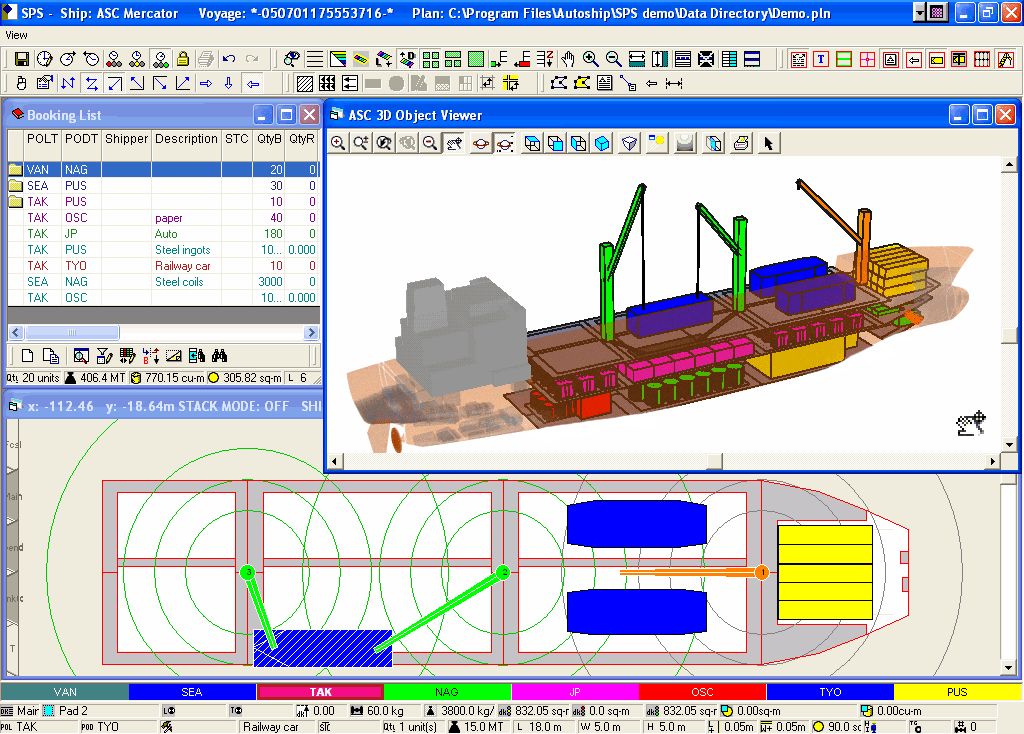
Figur 0901 Viser samlet planlegger skjerm (overall planning screen)
Rotterdam havn
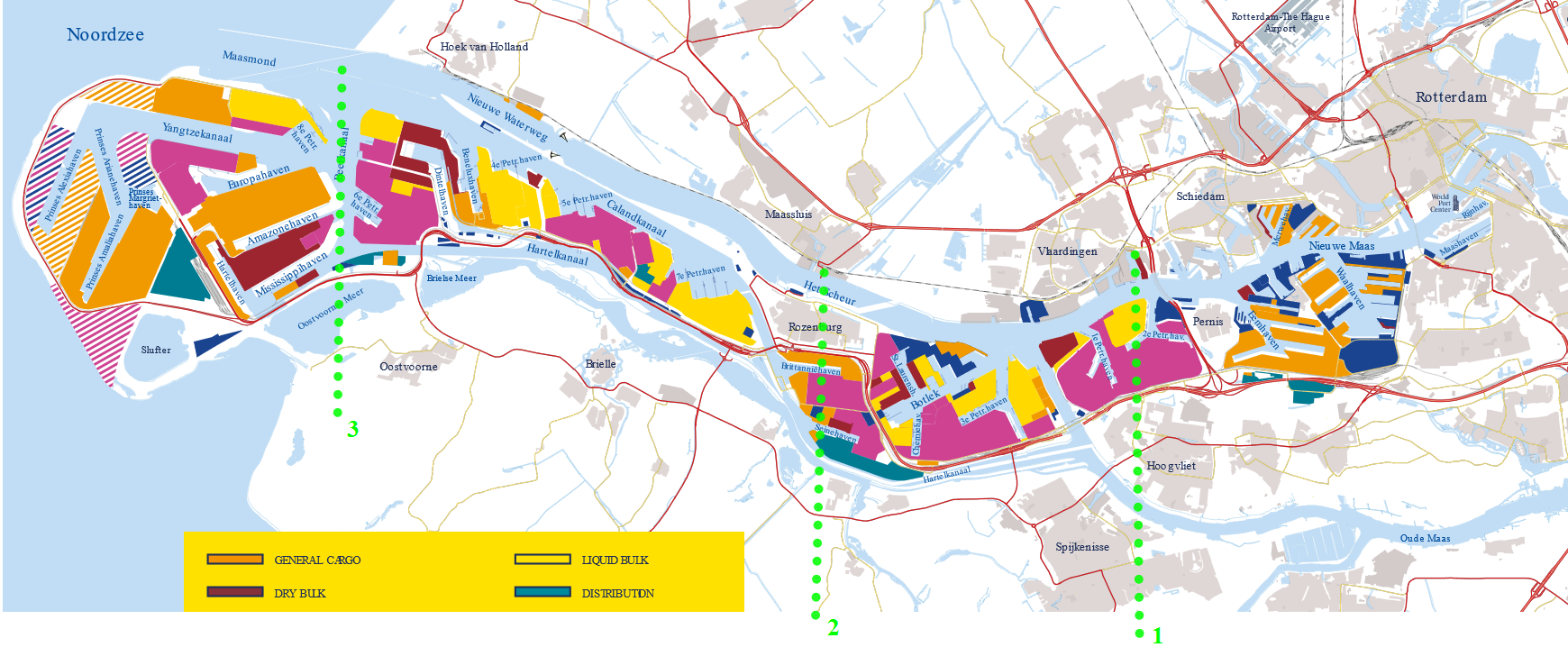
Figur 0902 viser et kartskisse over Rotterdam havn. Farge angir hvilke type terminal.
Rotterdam
Hvert år anløper 30 000 sjøgående skip og 105 000 innlandsfartøyer til havnebyen Rotterdam. Rotterdam er Europa største og en av de mest moderne havnebyer i verden.
Rotterdam var regnet som den travleste fra 1962 til 2004 da tok Shanghai over. Er et viktig internasjonalt handelssentrum, her foregår det omlasting mellom fartøyene på Rhinen, særlig til og fra Ruhr og havgående skip. Den 30 kilometer lange Nieuwe Waterweg gir forbindelse med Nordsjøen. Cirka 40 prosent av godset som går over havna er petroleum, en del container og i tillegg malm. I vest ligger de store petroleumshavnene Pernis og Botlek, og ytterst i Nieuwe Waterweg ligger den veldige europahavna Europoort som kan motta tankskip på opptil 500 000 dødvekttonn hvor havnen har en dybde på 22,6 meter. Rotterdam har flere petroleumsraffinerier og direkte rørledninger til Ruhr, Amsterdam med Schiphol flyplass og Antwerpen/Brussel.
Havnen i Rotterdam er kjent som en av de sikreste havnene i verden. En stor havn og industriområde som Rotterdam havn kan ikke uten omfattende sikkerhetstiltak. Havnesjefen (direktør) er utnevnt til Port Facility Security offiser (PFSO). Han sikrer overholdelse av havnesikkerhetsloven ved å utføre inspeksjoner og testing og sertifiseringsplaner for landsiden. Primær oppgaven er å fremme sikker og effektiv håndtering av frakt i Rotterdam havn.
Rotterdam ble regnet som en betydelig havneby fra midt på 1300 tallet, på denne tiden ble den utvidet med spade og hakke, etter den 2 verdenskrigen ble oljeraffineriene i Pernis bygget ut, Shell Pernis er Europas største raffineri. Alt det som lå vest for Pernis (1) var urørt land. Dybden ved kai på terminalene i Pernis er 12 meter, er ikke mulig å få den dypere, men på 50 tallet kunne tankskip, den gang datidens VLCC (Very large crude carrier), gå til kai. På 60 tallet kom kjemikaliefarten inn for fullt og Botlek ble bygget ut med terminaler for denne traden. På 60 tallet øket størrelsen på skip kolossalt, den første oljetankeren som passerte 100 000 Tonnes dødvekt ble levert i 1959, den første oljetankeren som passerte 200 000 Tonnes dødvekt ble levert i 1966 og den første oljetankeren som passerte 300 000 Tonnes dødvekt ble levert i 1968. På denne tiden begynte man å bygge ut Europoort, som blir vest for Rozenburg (2).
Maasvlakte som blir vest for (3) ble også bygget ut, før denne tid var det bare en sandbank, her ble det store bulkterminaler og container terminaler. Maasvlakte 2 som har de stiplete linjene ble bygget ut i perioden 2008 til 2013, her er det store helautomatiske containerterminaler slik som Euromax og APM. Maasvlakte ble bygget med å mudre sjøbunnen mens Maasvlakte 2 ble bygget med å påføre sjøbunnen sand i Nordsjøen. Det er den største containerhavnen i Europa og i 2017 så ble det handtert litt over 11 millioner containere (TEU).
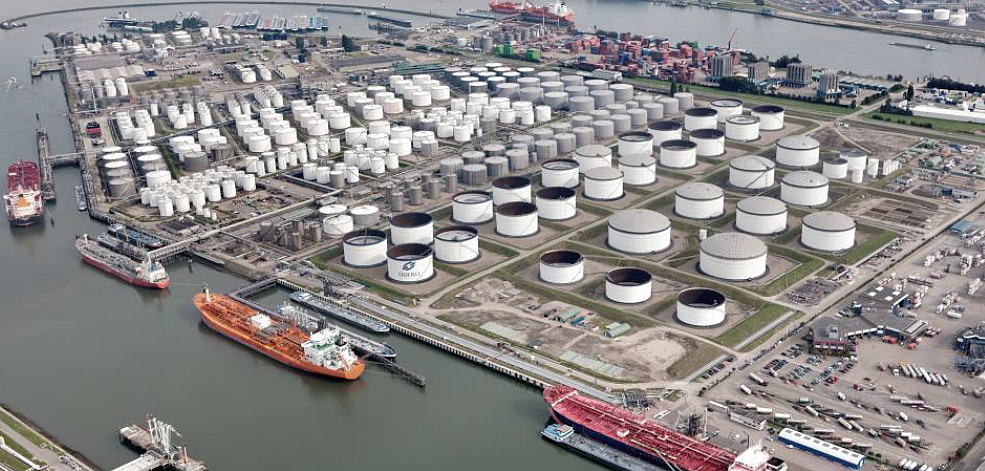
Figur 0903 viser Odfjell kjemikalieterminal i Botlek
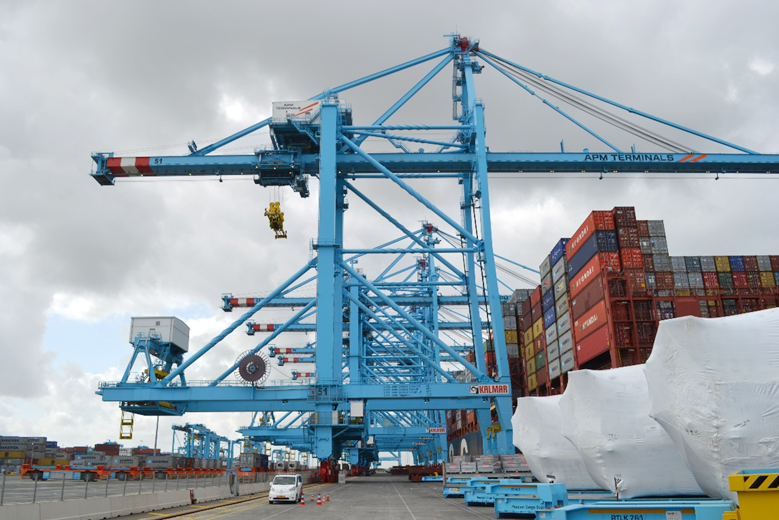
Figur 0904 Viser APM (helautomatiske) Containerterminal i Maasvlakte 2
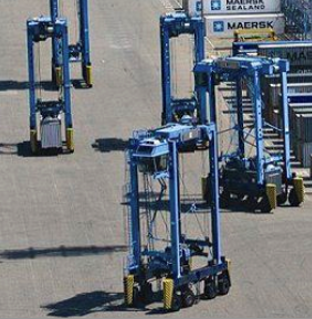
Figur 0905 viser Lift-AGVer ved APM terminalen
APM Terminals Maasvlakte 2: Skapte en ny epoke i havneinnovasjon da den ble tatt i bruk 2015.. Anlegget lanserte verdens første containerterminal for å utnytte fjernstyrte STS gantry kraner. Kranene flytter Containere mellom skip og de 62 batteridrevne heisautomatiserte guidede kjøretøy (Lift-AGVer) som transporterer containere mellom kaien og containergården, Løft-AGV-er representerer også verdens første serie AGV-maskiner som kan løfte og stable en container. En flåte med 54 automatiserte jern monterte gantrykraner (ARMG) plasserer deretter containere i gården i et høyt tetthets stablingssystem. Terminalens strømkrav leveres av vind generert elektrisitet, noe som ikke produserer CO2 utslipp eller forurensninger, og som også utgjør mye mindre støy enn vanlige dieselmotorer. Anbefaler å se på denne filmen: It 's all about remote operations (https://www.youtube.com/watch?v=tEk2v4RyFh4) .
Dordrecht: Ligger 2 mil sørøst for Rotterdam og er en havneby. Havnen i Dordrecht er den mest landlige havnen i Nederland. Den har en dybde på 9,45 meter og bidrar at Dordrechts havneområde er lett tilgjengelig for både havgående og innlandsfartøy. Videre har området gode vei- og godstogsforbindelser. Denne kombinasjonen av faktorer gjør området eksepsjonelt egnet for havnerelaterte forretningsaktiviteter som håndtering av bulkfrakt, logistikk og maritim produksjon. Den nåværende ombyggingen fokuserer på å utvide omfanget av havnerelaterte aktiviteter i området. Den store innlandstraffiken gjør at Dordrecht er det mest trafikkerte punkt av skipstrafikk i verden, punktet er markert med en rød pil på figur.
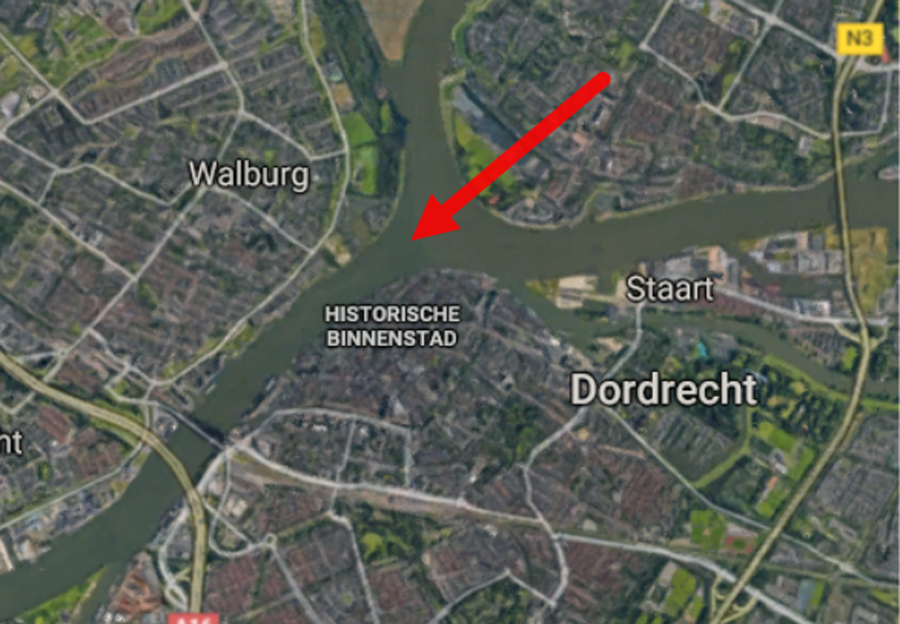
Figur. 0906 Viser et kartutsnitt av Dordrecht. Pilen angir det mest trafikkerte punkt (skipstrafikk) i verden
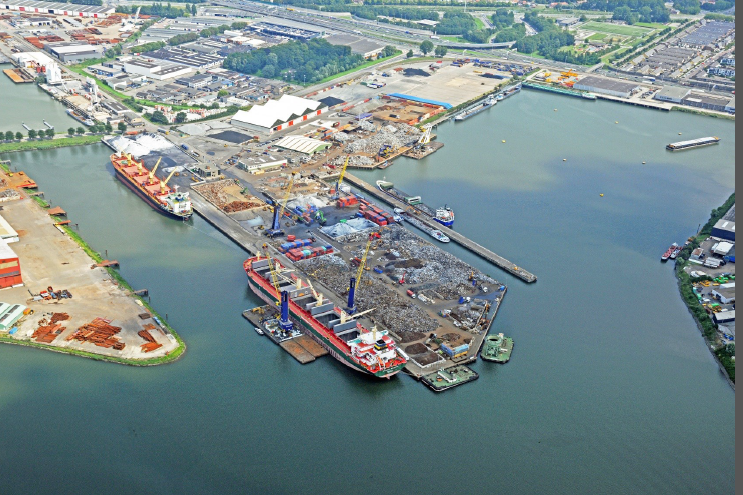
Figur 0907 viser lossing av skrapjern ved ZHD terminalen i Dordrecht.
Et havneopphold
Formålet med Port of Rotterdam-myndigheten er å styrke havnenes konkurranseposisjon som et logistikk-knutepunkt og industriell kompleks i verdensklasse. Ikke bare når det gjelder størrelse, men også med hensyn til kvalitet. Havneautoriteten fører derfor overgangen til bærekraftig energi og er forpliktet til digitalisering for å gjøre havnen og forsyningskjeden mer effektiv. Kjerneoppgavene til havnemyndigheten er å utvikle, forvalte og utnytte havnen på en bærekraftig måte og levere hurtige og sikre tjenester for frakt.
Ankomst: i god tid før skipet ankommer havnen så må det meldes inn til havnemyndighetene. Det kan gjøres i gjennom agenten, som er Rederiets representant i havn. Agenten skal sørge for best mulig anløp. Noen rederier har egne agentkontorer, andre bruker frittstående agentfirmaer etter behov. Agenten kan bestille los, slepebåter, varsle terminal hvor skipet skal losse eller laste og er ellers behjelpelig for å arrangere transport ved på og avmønstringer eller når noen av mannskapet skal til lege eller tannlege.
Lastemanifest (Cargomanifest)
Fraktedokument som brukes av tollpersonalet som gjennomgår lasten på en bestemt reise for et skip. Et manifest inneholder: mengde, opprinnelsessted, avsender, mottager, verdi.
Styrmannskvittering (Mate's receipt)
Er et dokument signert av skipets overstyrmann eller vaktgående styrmann at et vareparti er mottatt om bord i god stand, eventuelle skader på lasten må føres på styrmannskvitteringen. Varepartiet må telles opp før styrmannskvitteringen signeres.
Opptelling av last (tally cargo)
Et vareparti i stykkgodsfart kan bestå av et stort antall og derfor hyres det inn et opptellingsfirma. De jobber på Rederiets vegne. Telle er "å sjekke" eller "holde oversikt" over all last som er lastet eller som losses fra et fartøy. Det er en viktig del av lastearbeidet for å forhindre krav (Cargo claim) på grunn av at det er for lite last.
Forhindre krav
Det er en viktig del av lastearbeidet for å forhindre krav, noen ganger uekte, på skipet eller på lossearbeideren for at det er lite last om bord.
Konnossement (Bill of Lading)
Et konnossement er en kapteins kvittering for å ha mottatt lasten og hans løfte om å levere den på et bestemmelsessted. Det referer seg til et bestemt vareparti til en navngitt mottager. Styrmannskvitteringen er det dokumentet som detaljer er angitt på konnossementet, men skal samles ut fra et skips opptelling eller måling og vise den faktiske mengden og tilstanden til varene som er mottatt. Når tilstanden eller mengden av lasten berettiger det, være påtegnet med merknader som "revnet poser", "fargete baller", "rustne fat" og så videre. Man må ikke signere et «Back letter» som viser til skade på last i bytte med å signere et rent konnossement, se figur 0910. En slik signering vil gjøre P&I forsikringen invalid.
Skade på last (Damage cargo)
Skisser og bilder gjengitt med tillatelse fra assuranseselskapet Skuld
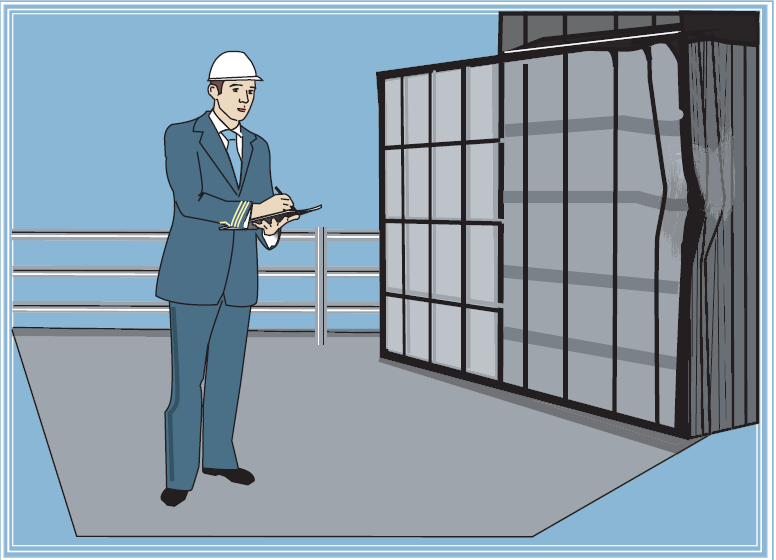
Figur 0908 Inspiser lasten og loggfør alle skader
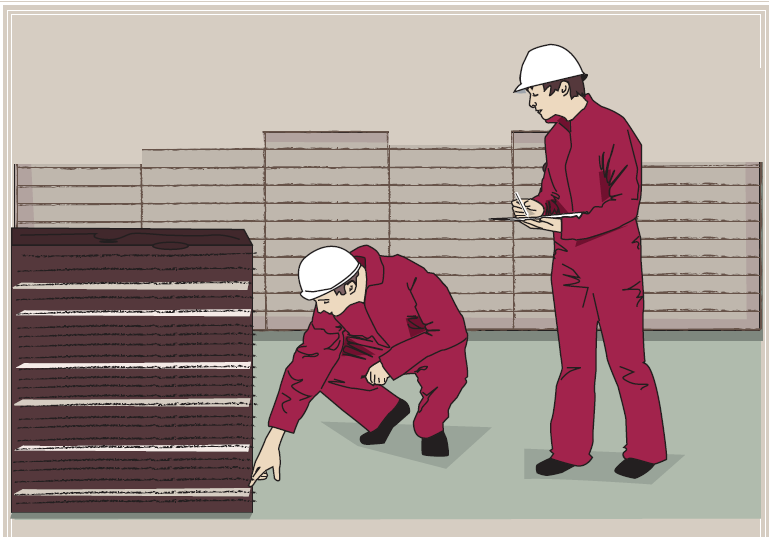
Figur 0909 Ta opptelling av lasten, da unngår man tap eller mangler med lasten
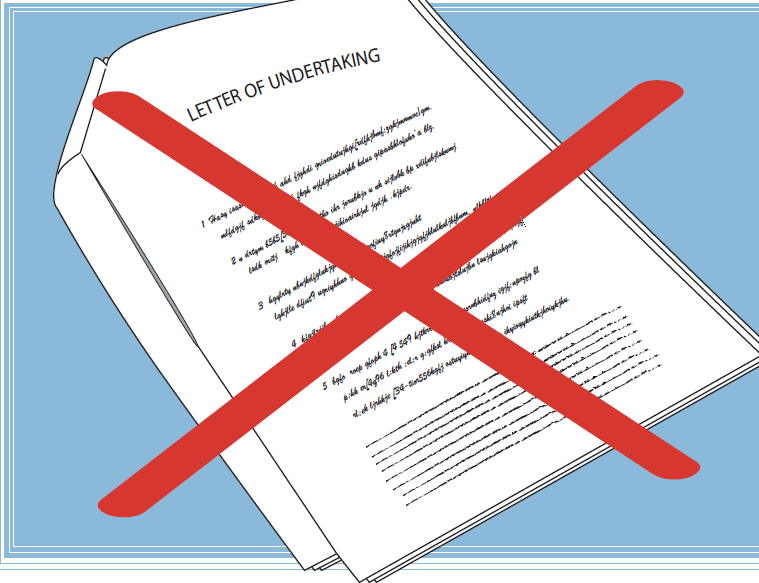
Figur 0910 Ikke signer «Back letter»
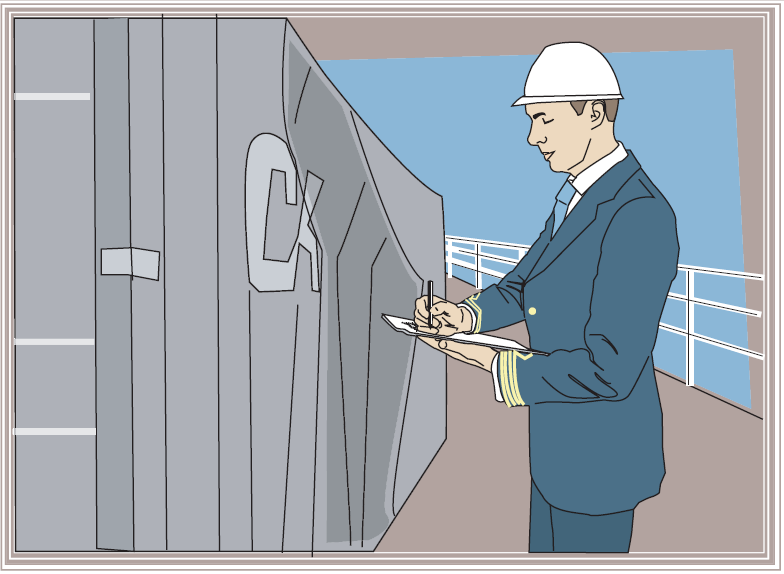
Figur 0911 Hvis befrakter er ansvarlig for lasting og stuing og ikke utfører dette tilfredsstillende. Skriv en protest på dette, fotografering er veldig nyttig
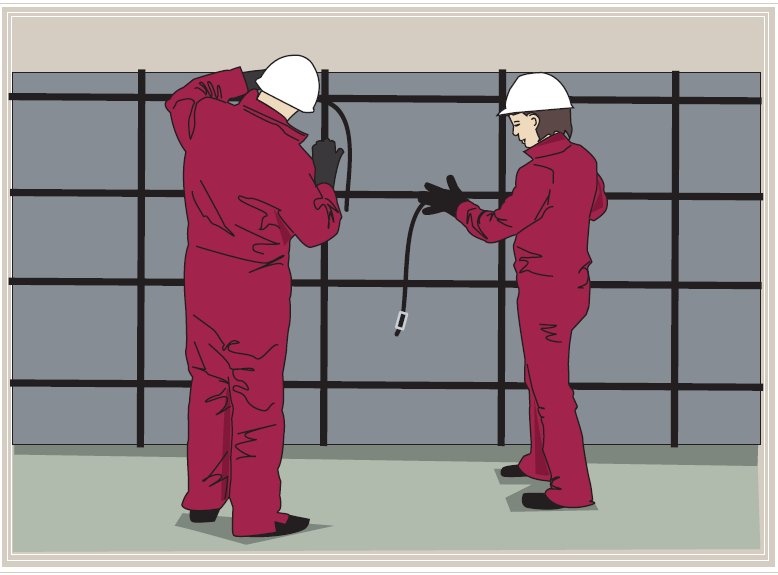
Figur 0912 Pass på at lasten er forsvarlig og trygt lastet, stuet, adskilt, fraktet og losset.
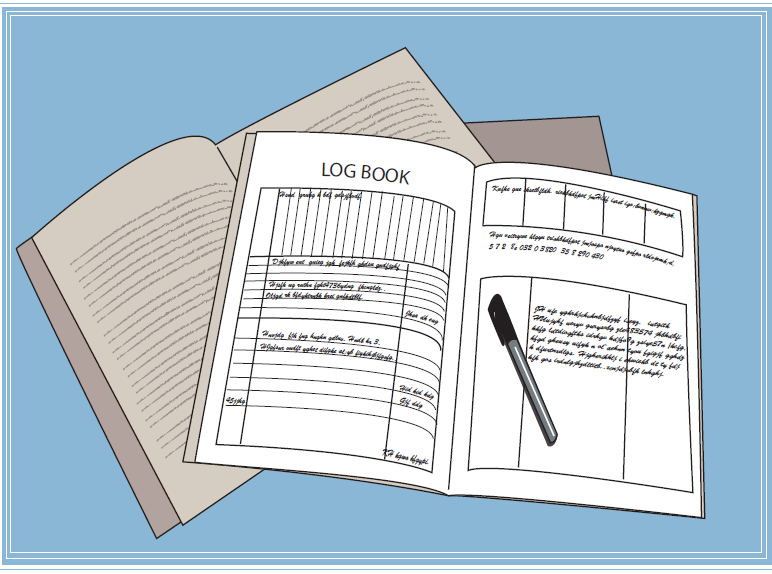
Figur 0913 Noter i loggboken inspeksjoner av lasterommene foretatt av skipets offiserer eller mannskap under reisen.
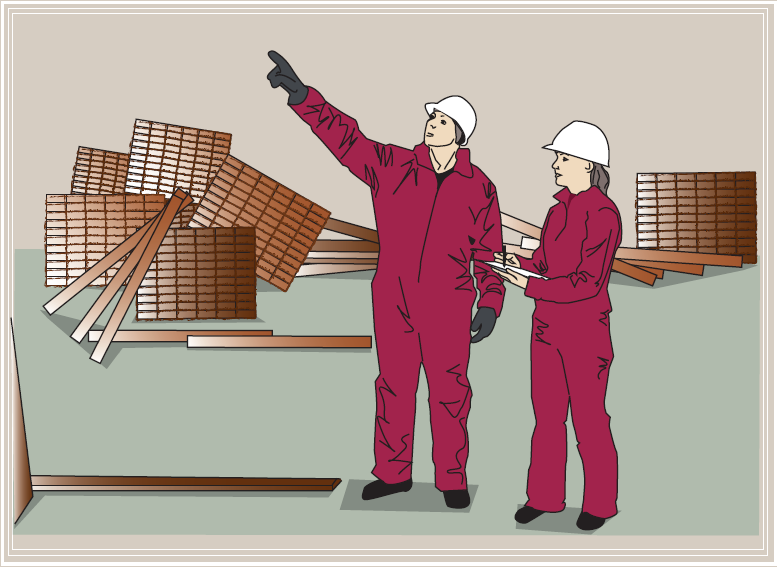
Figur 0914 Hvis skade på last under reisen, forsikre at alle skadene er loggført
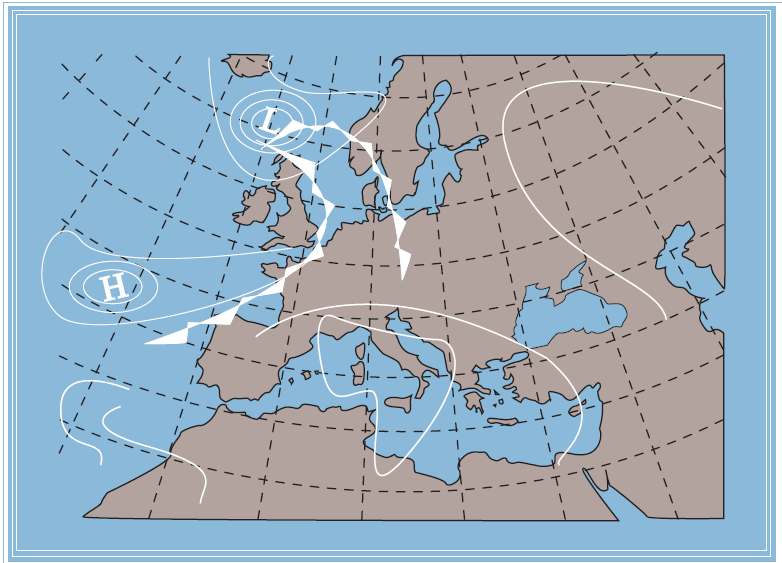
Figur 0915 Behold kopier av værmeldinger.
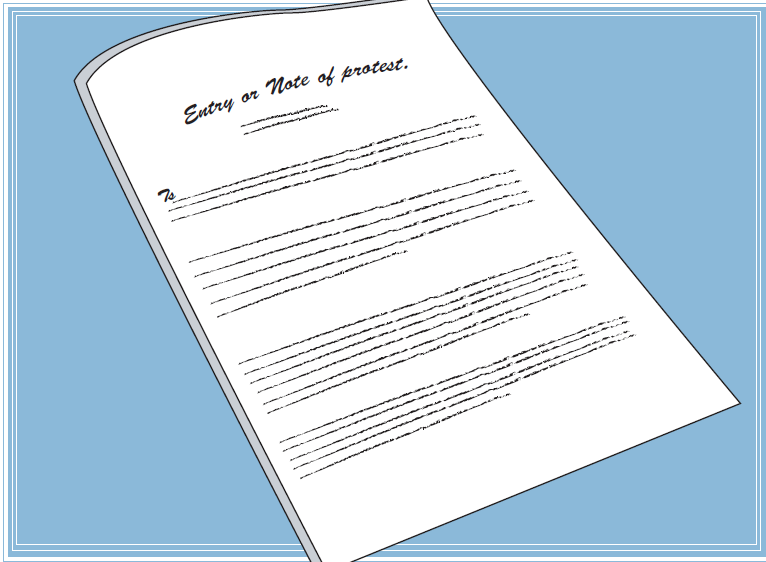
Figur 0916 Hvis det blir dårlig vær under reisen og det blir skade på lasten, inspisert og Utsted en « Sea protest» i den første mulige havnen skipet anløper. Kall inn P&I inspektør
Hva er skadet last? En last kan anses som skadet når den er mottatt av kjøperen i en tilstand som er verre enn når den var sendt av selgeren. Skade på lasten kan skje når som helst i en forsendelsesperiode. Det kan skje mens lasten er i besittelse av avsender, mens lasten blir pakket inn i en container, mens lasten lastes på en lastebil, lasten er i transitt på en sjøreise eller på jernbane, mens lasten lastes losses ved levering, mens lasten er i besittelse av mottager og så videre.
Typer av lasteskade:
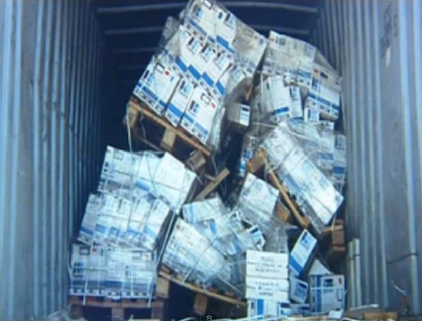
Figur 0917 Viser mangelfull stuasje
- Fysisk skade - hvor lasten er skadet på grunn av fall, bryte i sammen og så videre.
- Våtskader - hvor lasten er skadet på grunn av vann og eller for mye fuktighet.
- Forringelseskader - hvor lasten er skadet på grunn av forurensning, det kan være et rent raffinert produkt som blir forurenset ved å bli transportert i en råoljetank på et skip.
- Kjøle/fryse -relatert skade - hvor lasten er skadet på grunn av kjøle/fryse utstyret utstyr eller feil bruk.
Noen av hovedgrunnene til at lasteskader skjer i containere forsendelser kan inkludere, men ikke begrenset til:
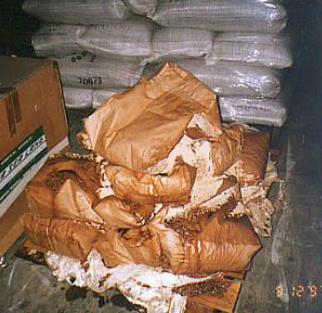
Figur 0918 Viser last som er skadet av vann, for eksempel i regnvær.
- Mangelfull emballasje for å beskytte lasten på en lang reise.
- Feil containertype brukt.
- Feil innstilling av temperatur og fuktighet i en temperaturkontroller.
- Overbelastning eller feil vektfordeling.
- Feil merking av farlig last container som fører til feil stuing om bord på et skip.
Lukt
Ømfintlig gods som klær, matvarer, sko eller varer som kaffe, te, tobakk, bomull etc. er svært utsatt for forurensning på grunn av lukt. For eksempel en last av klær i en container og lasten har en utpreget lukt .
Grunnen kan være at containeren tidligere ble brukt til å frakte produkter som kjemikalier eller dyrehud som har en karakteristisk lukt og at containeren ikke ble sjekket for lukt når den ble lastet.
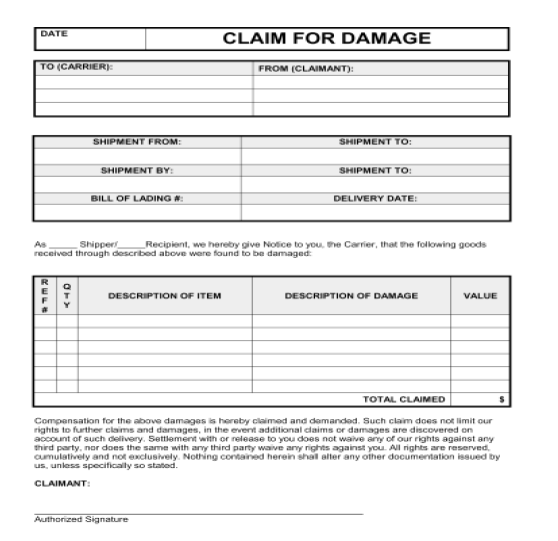
Figur 0919 viser et blankt cargo claim
Lastekrav
(Cargo claim) er i hovedsak et krav på økonomisk kompensasjon i forbindelse med økonomisk tap som oppstår som følge av brudd på transportkontrakten eller transportørens manglende oppfyllelse av visse kontraktsforpliktelser.
Transportøren er imidlertid ikke ansvarlig for å kompensere fordringshaveren dersom tapet skyldes omstendigheter som han er utelukket fra ansvar ved lov eller kontrakt. Selv om transportøren er ansvarlig, kan han ha rett til å begrense ansvaret. I så fall vil fraktkreveren bli forlatt med mindre enn full erstatning for hans krav både den kommersielle og juridiske konteksten som lasteskader oppstår er viktige.
Kontrakter
Nesten alle kommersielle laster som er fraktet på sjø av et fartøy, bæres under en eller annen form for kontrakt som angir partnernes rettigheter og forpliktelser. Det finnes flere former for slike kontrakter, som for eksempel reisepartier, konnossementer, fraktbrev og transportkontrakter, hver med unike egenskaper.
Imidlertid er grunnleggende forpliktelser fra transportøren på en hvilken som helst reise nesten det samme i de fleste jurisdiksjoner, uansett vilkårene i kontrakten. Vanligvis må transportøren: laster avtalt antall laster på avtalt sted på avtalt tidspunkt, - gir avsenderen en kvittering som viser at transportøren har tatt vare på lasten, - gir avsender bevis på transportavtalen (normalt en konnossement), fortsett til og nå det avtalte utstedelsesstedet / leveransen, losse lasten i samme mengde og tilstand som mottatt, utlevere lasten til til eieren av konnossementet, det er kun eieren av konnossementet som har lov til å motta den.
Disse forpliktelsene gjenspeiles også i internasjonale konvensjoner som gjelder sjøtransport, særlig Haagreglene, Haag-Visby-reglene og Hamburgs regler, som er blitt ratifisert av de fleste stater over hele verden. Imidlertid, som illustrert av det faktum at det eksisterer tre internasjonale regimer, har det vært vanskelig å oppnå ensartethet på dette rettsområdet.
Videre bør man ikke anta at anvendelsen av tilsvarende lovregler i forskjellige land vil gi det samme resultatet bare fordi de kommer ut av samme konvensjon.
Kommunikasjon
Kommunikasjon
Er veldig viktig aspekt for å oppnå en sikker laste eller losse operasjon. Det dreier seg fra om sjekklister skip/landsiden (ship/shore) er gjennomgått og signert vedrørende laste og losse operasjoner. Det er viktig at offiserer og mannskap er trygg i å kommunisere sikkert. Under er det gjengitt IMO standard marine communication phrases (Engelsk) som omhandler skip og operasjoner i forbindelse med last.

IMO standard marine communication phrases
The vessel
-
What is the deadweight of the vessel?
The deadweight is _____ tonnes.
-
What is the hold / bale / grain capacity of vessel?
The hold / bale / grain capacity is _____ cubic metres.
-
What is the container capacity of the vessel?
The container capacity is _____ TEU.
-
How many 20'/ 40' containers will the vessel load?
The vessel will load _____ 20'/ 40' containers.
-
How many cubic metres of cargo space are required?
_____ cubic metres of cargo space are required.
-
How many tonnes / cubic metres can the vessel still load?
The vessel can still load _____ tonnes / cubic metres.
-
How much deck cargo can the vessel load?
The vessel can load _____ tonnes / cubic metres / _____ 20'/40' containers on deck.
-
How many cars / trailers / trucks / _____ can the vessel load?
The vessel can load _____ cars / trailers / trucks / _____ .
-
What is the size of the hatch openings?
The size of the hatch openings is _____ by _____ metres.
-
What is the safety load of no. _____ hold?
The safety load of the _____ deck of no. _____ hold is _____ tonnes per square metre.
The vessel will still bunker _____ tonnes of fuel / fresh water/ _____
Dockside Loading and unloading
Loading capacities and quantities
-
What is the deadweight of the vessel?
The deadweight is _____ tonnes.
-
What is the hold / bale / grain capacity of vessel?
The hold / bale / grain capacity is ____ cubic metres.
-
What is the container capacity of the vessel?
The container capacity is _____ TEU.
-
How many 20'/ 40' containers will the vessel load?
The vessel will load _____ 20'/ 40' containers.
-
How many cubic metres of cargo space are required?
_____ cubic metres of cargo space are required.
Dockside / shipboard cargo handling gear and equipment
-
Are dockside / floating cranes available?
Yes, dockside / floating cranes are available.
No, dockside / floating cranes are not available. -
What is the capacity of the crane?
The capacity of the crane is _____ tonnes.
-
What is the maximum reach of the crane?
The maximum reach of the crane is _____ metres.
-
What is the handling capacity of the container crane / bridge?
The handling capacity of container crane / bridge is _____ containers per hour.
-
What is the handling capacity of the grain elevator/ore loader/ _____ ?
The handling capacity of the grain elevator / ore loader / is _____ tonnes / cubic metres per hour.
-
What is the pumping capacity of the cargo pumps?
The pumping capacity of the cargo pumps is _____ tonnes per hour.
-
Are (light) fork-lift trucks for the cargo holds available?
Yes, (light) fork-lift trucks are available.
No, (light) fork-lift trucks are not available. -
Only use electric fork-lift trucks in the holds.
-
What is the capacity of the fork-lift truck?
The capacity of the fork-lift truck is _____ tonnes.
-
What is the capacity of the derricks / cranes of the vessel?
The capacity of the derricks / cranes of the vessel is _____ tonnes.
-
What is the capacity of the _____ slings?
The capacity of the _____ slings is _____ tonnes.
-
These slings do not permit safe cargo handling.
Replace the slings.
-
Are bob-cats available for trimming?
Yes, bob-cats are available for trimming.
No, bob-cats are not available for trimming.
Preparing for loading / unloading
-
Prepare the vessel for loading / unloading.
-
Unlock the hatch covers.
-
Rig the hatchrails in no. _____ hold(s).
-
Give notice of readiness to load/unload by _____ UTC/local time.
-
Is the cargo list available and complete?
Yes, the cargo list is available and complete .
No, the cargo list is not available and complete (yet).
The cargo list will be available and complete in _____ minutes. -
Complete the stowage plan.
-
Make the stability calculation.
-
Are the holds clean / dry / free of smell ?
Yes, the holds are clean / dry / free of smell.
No, the holds are not clean / dry / free of smell (yet).
The holds will be clean / dry / free of smell in _____ minutes / hours. -
Clean the hold(s) / deck(s).
-
Are the safety arrangements in the hold(s) operational?
Yes, the safety arrangements in the hold(s) are operational.
No, the safety arrangements in the hold(s) are not operational (yet).
The safety arrangements in the hold(s) will be operational in _____ minutes. -
Fill the double bottom tank(s) / ballast tank(s) before loading the heavy lifts.
-
What is the maximum loading rate / unloading rate?
The maximum loading rate / unloading rate is _____ tonnes per hour.
-
Do not exceed the loading rate / unloading rate of _____ tonnes per hour.
Operating cargo handling equipment and hatches
-
Open all hatches before loading / unloading.
-
Are the cranes / derricks operational?
Yes, the cranes / derricks are operational.
No, the cranes / derricks are not operational (yet).
The cranes / derricks will be operational in _____ minutes. -
Rig the derrick(s) / crane(s) of no. _____ hold(s).
-
Check the preventers.
-
Keep the safe working load of derrick(s) / crane(s).
-
Instruct the winchmen / cranemen .
-
Clean the tween deck(s) before opening lower hold(s).
-
Switch on / off the hold ventilation.
-
Switch on / off the hold lights.
-
Close / open the cargo port(s) to no. _____ hold(s).
Maintaining
Maintaining / repairing cargo handling equipment
-
Check the hold(s) / hatch cover(s) / derrick(s) / _____ for damage and report.
-
The hold(s) / hatch cover(s) / derrick(s) / _____ is / are in order.
-
The cargo battens are damaged.
-
The rubber seals of the hatch cover(s) are damaged.
-
The preventer(s) of no. _____ hold(s) is / are damaged.
-
The (Container) lashings are damaged.
-
_____ is / are damaged.
-
Replace the damaged _____ .
-
The hold ladder(s) is / are bent.
Straighten the hold ladder(s).
-
Are the hold ventilators operational?
Yes, the hold ventilators are operational.
No, the hold ventilators are not operational (yet).
The hold ventilators will be operational in _____ minutes. -
Are the winch motors operational?
Yes, the winch motors are operational.
No, the winch motor of no. _____ derrick is not operational (yet).
The winch motor of no. _____ derrick will be operational in _____ minutes. -
Check the repair works personally.
Briefing on stowing and securing
-
Check the
careful and safe stowage.
complete unloading.
proper use of handling gear.
careful separation of different lots. -
Close the hatches in case of rain / snow / _____ .
-
Refuse damaged / crushed / renailed /wet /torn/ resewn / _____ boxes / cartons / cases /crates / bags / _____ .
-
Do not overstow cartons with other goods _____
-
Do not use hooks for handling bags.
-
Stow ventilation ducts into the bag cargo.
-
Place dunnage between the tiers.
-
Stow the
_____ into tween deck of no. _____ hold.
pallets / cartons / _____ closely together.
_____ in reefer hold.
empty containers in topmost tiers .
container(s) onto hatch cover(s).
_____ . -
Check the
containers for damage.
correct interlock of the stowpieces.
correct fixing of the rope clips.
_____ . -
Secure the heavy lift(s) immediately .
-
Relash all lashings.
B3/1.2 Handling dangerous goods
Also see IMO-IMDG Code, London 1994, as revised.
Briefing on nature of dangerous goods
-
What is the IMO-Class of these goods?
The IMO-Class of these goods is: _____ .
-
This package contains IMO - Class _____ goods.
-
These goods are flammable / poisonous / _____ .
Handle these goods with caution.
-
These goods emit flammable gases in contact with water.
Keep these goods dry.
-
These goods are liable to spontaneous heating and combustion.
-
Do not touch _____ .
Handling liquid goods, bunkers and ballast - pollution prevention
-
Preparing safety measures
Plug the scuppers / drip-trays and report.
All scuppers / drip-trays are plugged. -
Close the sea-valves / discharges and report.
All sea-valves / discharges are closed.
-
Stand by absorbent materials and report.
Absorbent materials standing by.
-
Stand by spill control gear and report.
Spill control gear standing by.
-
Stand by emergency fire pump / foam monitor / fire extinguishers and report.
Emergency fire pump / foam monitor / fire extinguishers standing by.
-
Fit bonding wire and report.
Bonding wire is fitted.
-
Maintain contact on VHF Channels _____ with the bunker barge / oil terminal.
-
Is the oil pollution prevention plan available ?
Yes, the oil pollution prevention plan is available.
No, the oil pollution prevention plan is not available (yet).
The oil pollution prevention plan will be available in _____ minutes. -
Instruct the pumpman / _____ and report.
Pumpman / _____ is instructed.
Operating
Operating pumping equipment
including: phrases for communication with bunker barge / oil terminal
-
What is the (maximum) loading rate / discharge rate ?
The (Maximum) loading rate / discharge rate is: _____ tonnes per hour.
-
Is the COW - system / inert gas system operational ?
Yes, the COW - system / inert gas system is operational .
No, the COW - system / inert gas system is not operational (yet).
The COW - system / inert gas will be operational in _____ minutes. -
When will crude oil washing start ?
Crude oil washing will start in _____ minutes.
-
Are your tanks inerted?
Yes, my tanks are inerted.
No, my tanks are not inerted (yet).
My tanks will be inerted in _____ minutes. -
What is the pressure in the inerted tanks?
The pressure in the inerted tanks is _____ bar.
-
What is the pumping pressure ?
The pumping pressure is _____ bar.
-
Can we connect the loading arm ?
Yes, you can connect the loading arm.
No, you cannot connect the loading arm (yet).
Connect the loading arm in _____ minutes. -
Inform _____ minutes before loading / discharge will start / finish.
Loading / discharge will start / finish in _____ minutes.
-
What is the back pressure for stripping ?
The backpressure for stripping is_____ bars.
-
Are the cargo hoses / booms connected ?
Yes, the cargo hoses / booms are connected.
No, the cargo hoses / booms are not connected (yet).
The cargo hoses / booms will be connected in _____ minutes. -
Are the cargo hoses / booms disconnected ?
Yes, the cargo hoses / booms are disconnected.
No, the cargo hoses / booms are not disconnected (yet).
The cargo hoses / booms will be disconnected in _____ minutes. -
Are you ready to load /discharge?
Yes, I am ready to load / discharge.
No, I am not ready to load /discharge (yet).
I will be ready to load / discharge in _____ minutes. -
Keep a safe working pressure.
-
Open the valve(s) and report.
All full open aboard / ashore.
-
Close the valve(s) and report.
All full closed aboard / ashore.
-
Start pumping (slowly).
-
Are you pumping / receiving ?
Yes, I am pumping / receiving.
No, I am not pumping / not receiving. -
Increase / decrease pumping rate to _____ revolutions / bar..
-
(Quantity received) - stop pumping.
Reporting and cleaning up spillage
-
Leak at manifold connection!
Overflow at _____ !
-
Stop pumping!
-
How much is spilled?
Spill is about _____ tonne(s).
-
Treat spill with _____
-
Stand by oil clearance team and report.
Oil clearance team standing by.
All crew assist to remove the spill.
Spillage stopped.
Spill cleaned up.
Spill waste contained in save-all/ _____.
Oil / _____ escaping into sea / harbour water!
Inform pollution control!
Sjekkliste Skip /
Landsiden før lasting og lossing
Sjekkliste Skip / Landsiden før lasting og lossing.
Nedenfor er det retningslinjer om hvordan/hvorfor det/den skal føres ut
SHIP/SHORE SAFETY CHECKLIST
For Loading or Unloading Dry Bulk Cargo Carriers
Date: ______________________________________________________________
Port: ______________________________________________________________
Terminal/Quay: ___________________________________________________
Available depth of water in berth: __________________________________
Minimum air draught: _____________________________________________
Ship's name: ______________________________________________________
Arrival draught(read/calculated): __________________________________
Air draught: _______________________________________________________
Calculated departure draught: _____________________________________
Air draught: _______________________________________________________
Air draught
* The term air draught should be construed carefully: if the ship is in a river or an estuary, it usually refers to maximum mast height for passing under bridges, while on the berth it usually refers to the height available or required under the loader or unloader.
The Master and terminal manager, or their representatives, should complete the checklist jointly. Advice on points to be considered is given in the accompanying guidelines. The safety of operations requires that all questions should be answered affirmatively and the boxes ticked. If this is not possible, the reason should be given, and agreement reached upon precautions to be taken between ship and terminal. If a question is considered to be not applicable write "N/A", explaining why if appropriate.
| SHIP | TERMINAL | |
|---|---|---|
| 1. Is the depth of water at the berth, and the air draught, adequate for the cargo operation? | ||
| 2. Are mooring arrangements adequate for all local effects of tide, current, weather, traffic and craft alongside? | ||
| 3. In emergency, is the ship able to leave the berth at any time? | ||
| 4. Is there safe access between the ship and the wharf? Tended by Ship/Terminal (cross out the appropriate) |
||
| 5. Is the agreed ship/terminal communications system operative? Communication method: ______________ Language: _______________ Radio channels/phone numbers: _____________ |
||
| 6. Are the liaison contact persons during operations positively identified? Ship contact persons ___________________ Shore contact person(s): _________________ Location: _______________________________ |
||
| 7. Are adequate crew on board, and adequate staff in the terminal, for emergency? | ||
| 8. Have any bunkering operations been advised and agreed? | ||
| 9. Have any intended repairs to wharf or ship whilst alongside been advised and agreed? | ||
| 10. Has a procedure for reporting and recording damage from cargo operations been agreed? | ||
| 11. Has the ship been provided with copies of port and terminal regulations, including safety and pollution requirements and details of emergency services? | ||
| 12. Has the shipper provided the Master with the properties of the cargo in accordance with the requirements of chapter VI of SOLAS? | ||
| 13. Is the atmosphere safe in holds and enclosed spaces to which access may be required, have fumigated cargoes been identified, and has the need for monitoring of atmosphere been agreed by ship and terminal? | ||
| 14. Have the cargo handling capacity and any limits of travel for each loader/unloader been passed to the ship/terminal? Loader: ____________________________ Loader: ____________________________ Loader: ____________________________ |
||
| 15. Has a cargo loading or unloading plan been calculated for all stages of loading/deballasting or unloading/ballasting? Copy lodged with _______________________ | ||
| 16.Have the holds to be worked been clearly identified in the loading or unloading plan, showing the sequence of work, and the grade and tonnage of cargo to be transferred each time the hold is worked? | ||
| 17. Has the need for trimming of cargo in the holds been discussed, and the method and extent been agreed? | ||
| 18. Do both ship and terminal understand and accept that if the ballast programme becomes out of step with the cargo operation, it will be necessary to suspend cargo operation until the ballast operation has caught up? | ||
| 19. Have the intended procedures for removing cargo residues lodged in the holds while unloading, been explained to the ship and accepted? | ||
| 20. Have the procedures to adjust the final trim of the loading ship been decided and agreed? Tonnage held by the terminal conveyor system _____________________ |
||
| 21. Has the terminal been advised of the time required for the ship to prepare for sea, on completion of cargo work? |
THE ABOVE HAS BEEN AGREED:
Time: _________________ Date: ______________________________
For Ship: ______________ For Terminal: _____________________
Rank: _________________ Position/Title: _____________________
GUIDELINES FOR COMPLETING THE SHIP/
SHORE SAFETY CHECKLIST
The purpose of the Ship/Shore Safety Checklist is to improve working relationships between ship and terminal, and thereby to improve the safety of operations. Misunderstandings occur and mistakes can be made when ships' officers do not understand the intentions of the terminal personnel, and the same applies when terminal personnel do not understand what the ship can and cannot safely do.
Completing the checklist together is intended to help ship and terminal personnel to recognize potential problems, and to be better prepared for them.
1 Is the depth of water at the berth, and the air draught*, adequate for the cargo operations to be completed ? The depth of water should be determined over the entire area the ship will occupy, and the terminal should be aware of the ship's maximum air draught and water draught requirements during operations. Where the loaded draught means a small underkeel clearance at departure, the Master should consult and confirm that the proposed departure draught is safe and suitable.
The ship should be provided with all available information about density and contaminates of the water at the berth.
Air draught
- The term air draught should be construed carefully: if the ship is in a river or an estuary it usually refers to maximum mast height for passing under bridges, while on the berth it usually refers to the height available or required under the loader or unloaders.
2 Are mooring arrangements adequate for all local effects of tide, current, weather, traffic and craft alongside? Due regard should be given to the need for adequate fendering arrangements. Ships should remain well secured in their moorings.
Alongside piers or quays, ranging of the ship should be prevented by keeping mooring lines taut; attention should be given to the movement of the ship caused by tides, currents or passing ships and by the operation in progress.
Wire ropes and fibre ropes should not be used together in the same direction because of differences in their elastic properties.
3 In emergency, is the ship able to leave the berth at any time ? The ship should normally be able to move under its own power at short notice, unless agreement to immobilise the ship has been reached with the terminal representative, and the port authority where applicable.
In an emergency a ship may be prevented from leaving the berth at short notice by a number of factors. These include low tide, excessive trim or draught, lack of tugs, no navigation possible at night, main engine immobilised, etc. Both the ship and the terminal should be aware if any of these factors apply, so that extra precautions can be taken if need be.
The method to be used for any emergency unberthing operation should be agreed taking into account the possible risks involved. If emergency towing-off wires are required, agreement should be reached on their position and method of securing.
4 Is there safe access between the ship and the wharf ? The means of access between the ship and the wharf must be safe and legal, and may be provided by either ship or terminal. It should consist of an appropriate gangway or accommodation ladder with a properly fastened safety net underneath it. Access equipment must be tended, since it can be damaged as a result of changing heights and draughts; persons responsible for tending it must be agreed between the ship and terminal, and recorded in the checklist.
The gangway should be positioned so that it is not underneath the path of cargo being loaded or unloaded. It should be well illuminated during darkness. A lifebuoy with a heaving line should be available on board the ship near the gangway or accommodation ladder.
5 Is the agreed ship/terminal communications system operative ? Communication should be maintained in the most efficient way between the responsible officer on duty on the ship and the responsible person ashore. The selected system of communication and the language to be used, together with the necessary telephone numbers and/or radio channels, should be recorded in the checklist.
6 Are the liaison contact persons during operations positively identified? The controlling personnel on ship and terminal must maintain an effective communication with each other and their respective supervisors. Their names, and if appropriate where they can be contacted, should be recorded in the checklist.
The aim should be to prevent development of hazardous situations, but if such a situation does arise, good communication and knowing who has proper authority can be instrumental in dealing with it.
7 Are adequate crew on board, and adequate staff in the terminal, for emergency ? It is not possible or desirable to specify all conditions, but it is important that a sufficient number of personnel should be on board the ship, and in the terminal throughout the ship's stay, to deal with an emergency.
The signals to be used in the event of an emergency arising ashore or on board should be clearly understood by all personnel involved in cargo operations.
8 Have any bunkering operations been advised and agreed? The person on board in charge of bunkering must be identified, together with the time, method of delivery (hose from shore, bunker barge, etc.) and the location of the bunker point on board. Loading of bunkers should be co-ordinated with the cargo operation. The terminal should confirm agreement to the procedure.
9 Have any intended repairs to wharf or ship whilst alongside been advised and agreed? Hot work, involving welding, burning or use of naked flame, whether on the ship or the wharf may require a hot work permit. Work on deck which could interfere with cargo work will need to be coordinated.
In the case of combination carrier a gas free certificate (including for pipelines and pumps) will be necessary, issued by a shore chemist approved by the terminal or port authority.
10 Has a procedure for reporting and recording damage from cargo operations been agreed? Operational damage can be expected in a harsh trade. To avoid conflict, a procedure must be agreed, before cargo operations commence, to record such damage. An accumulation of small items of damage to steel work can cause significant loss of strength for the ship, so it is essential that damage is noted, to allow prompt repair.
11 Has the ship been provided with copies of port and terminal regulations, including safety and pollution requirements and details of emergency services ? Although much information will normally be provided by a ship's agent, a fact sheet containing this information should be passed to the ship on arrival, and should include any local regulations controlling the discharge of ballast water and hold washings.
12 Has the shipper provided the master with the properties of the cargo in accordance with the requirements of chapter VI of SOLAS? The shipper should pass to the master, for example, the grade of cargo, particle size, quantity to be loaded, stowage factor, and cargo moisture content. The IMO BC Code gives guidance on this.
The ship should be advised of any material which may contaminate or react with the planned cargo, and the ship should ensure that the holds are free of such material.
13 Is the atmosphere safe in holds and enclosed spaces to which access may be required, have fumigated cargoes been identified, and has the need for monitoring of atmosphere been agreed by ship and terminal? Rusting of steelwork or the characteristics of a cargo may cause a hazardous atmosphere to develop. Consideration should be given to: oxygen depletion in holds; the effect of fumigation either of cargo to be discharged, or of cargo in a silo before loading from where gas can be swept on board along with the cargo with no warning to the ship; and leakage of gases, whether poisonous or explosive, from adjacent holds or other spaces.
14 Have the cargo handling capacity and any limits of travel for each loader/unloader been passed to the ship/terminal ? The number of loaders or unloaders to be used should be agreed, and their capabilities understood by both parties. The agreed maximum transfer rate for each loader/unloader should be recorded in the checklist.
Limits of travel of loading or unloading equipment should be indicated. This is essential information when planning cargo operations in berths where a ship must be shifted from one position to another due to loading. Gear should always be checked for faults and that it is clear of contaminates from previous cargoes. The accuracy of weighing devices should be ascertained frequently.
15 Has a cargo loading and unloading plan been calculated for all stages of loading/deballasting or unloading/ballasting? Where possible the ship should prepare the plan before arrival. To permit her to do so the terminal should provide whatever information the ship requests for planning purposes. On ships which require longitudinal strength calculations, the plan should take account of any permissible maxima for bending moments and shear forces.
The plan should be agreed with the terminal and a copy passed over for use by terminal staff. All watch officers on board and terminal supervisors should have access to a copy. No deviation from the plan should be allowed without agreement of the master.
According to SOLAS regulation VI/7, it is required to lodge a copy of the plan with the appropriate authority of the port State. The person receiving the plan should be recorded in the checklist.
16 Have the holds to be worked been clearly identified in the loading or unloading plan, showing the sequence of work, and the grade and tonnage of cargo to be transferred each time the hold is worked ? The necessary information should be provided in the form as set out in appendix 2 of this Code.
17 Has the need for trimming of cargo in the holds been discussed, and the method and extent been agreed ? A well-known method is spout trimming, and this can usually achieve a satisfactory result. Other methods use bulldozers, front-end loaders, deflector blades, trimming machines or even manual trimming. The extent of trimming will depend upon the nature of the cargo, and must be in accordance with the BC Code.
18 Do both ship and terminal understand and accept that if the ballast programme becomes out of step with the cargo operations, it will be necessary to suspend cargo operations until the ballast operation has caught up ? All parties will prefer to load or discharge the cargo without stops if possible. However, if the cargo or ballast programmes are out of step a stop to cargo handling must be ordered by the master and accepted by the terminal to avoid the possibility of inadvertently overstressing the ship's structure.
A cargo operations plan will often indicate cargo check points, when conditions will also allow confirmation that the cargo and ballast handling operations are in alignment.
If the maximum rate at which the ship can safely accept the cargo is less than the cargo handling capacity of the terminal, it may be necessary to negotiate pauses in the cargo transfer programme or for the terminal to operate equipment at less than the maximum capacity.
In areas where extremely cold weather is likely, the potential for frozen ballast or ballast lines should be recognized.
19 Have the intended procedures for removing cargo residues lodged in the holds while unloading been explained to the ship and accepted ? The use of bulldozers, front-end loaders or pneumatic/hydraulic hammers to shake material loose should be undertaken with care, as wrong procedures can damage or distort ships\' steel work. Prior agreement to the need and method intended, together with adequate supervision of operators, will avoid subsequent claims or weakening of the ship's structure.
20 Have the procedures to adjust the final trim of the loading ship been decided and agreed ? Any tonnages proposed at the commencement of loading for adjusting the trim of the ship can only be provisional, and too much importance should not be attached to them. The significance lies in ensuring that the requirement is not overlooked or ignored. The actual quantities and positions to be used to achieve final ship's trim will depend upon the draft readings taken immediately beforehand. The ship should be informed of the tonnage on the conveyor system since that quantity may be large and must still be loaded when the order "stop loading" is given. This figure should be recorded in the checklist.
21 Has the terminal been advised of the time required for the ship to prepare for sea, on completion of cargo work? The procedure of securing for sea remains as important as it ever was, and should not be skimped. Hatches should be progressively secured on completion so that only one or two remain to be closed after cargo work is finished.
Modern deep water terminals for large ships may have very short passages before the open sea is encountered. The time needed to secure, therefore, may vary between day or night, summer or winter, fine weather or foul weather.
Early advice must be given to the terminal if any extension of time is necessary.

